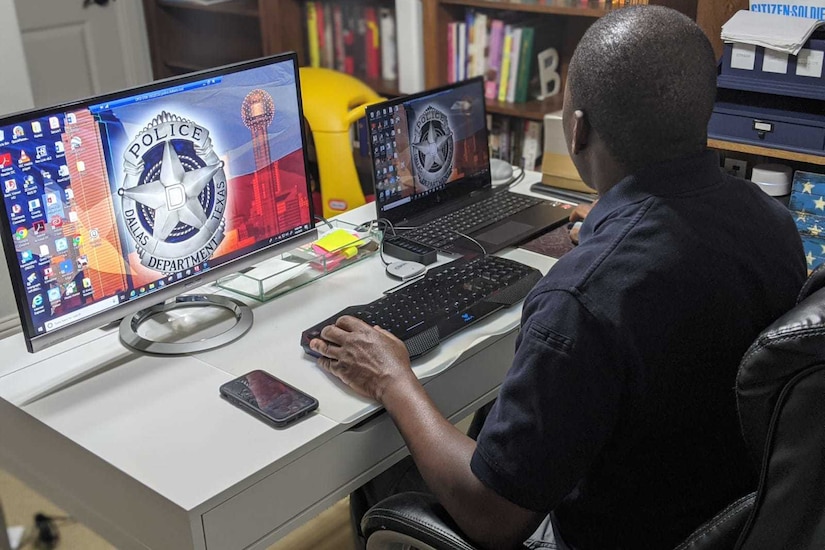April 16, 2020 | BY David Vergun , DOD News
The internet went live in 1969, thanks, in part, to the
Defense Department's Advanced Research Projects Agency and DARPA's partnership
with scientists, industry and academia.
Today, DOD is using the internet in novel ways as a tool to
enhance traditional health care practices and to help in battling the
coronavirus.
For example, telework, email, video teleconferencing,
telehealth, telemedicine, distance learning, virtual counseling, virtual
funerals and sharing COVID-19 medical research data across the globe are just a
few of the internet applications being used by civilians and the military to
share information and mitigate the impact of this deadly virus.
Prior to the internet, long-distance communication could be
accomplished only via the telephone or shortwave radio.
During the height of the Cold War, the Pentagon wanted a
more secure means of communication, particularly in the event of a nuclear
attack.
We're made up of resilient people. We will come out of this
on the far end. We're learning a lot about relationships and taking care of
each other that's going to make us a stronger institution."
Jim Helis, Army Resiliency Directorate director
Internet pioneer Vinton Cerf, then working in the Pentagon,
collaborated with others to design a network system that could continue
operating under any conditions. The key to this is that information — text,
photos, voice and video — can travel from point A to point B over multiple
routes in the network, bypassing routes that are slow or nonfunctional.
Information being sent is broken up into chunks that are
called packets that might take many network routes. Once they reach their final
destination, they are reassembled into a cohesive whole. That was unlike the
telephone, which had only one line, or route, to follow.
DARPA-funded projects continued to create internet and
computing innovations: graphical user interfaces, the mouse, technological
achievements that support speech recognition, touch-screen displays,
accelerometers, the wireless capabilities at the core of today's smartphones
and tablets, and much more.
DARPA also has long been a leader in the development of
emerging technologies such as artificial intelligence, machine learning and
semi-autonomous systems.
A silver lining from the coronavirus pandemic is that
expanded virtual health care, distance learning and other virtual
life-enhancing experiences may become the new normal for service members and
their families in a post-COVID-19 world.
Jim Helis, Army Resiliency Directorate director, referenced
the importance of connecting virtually. "There's a sacred trust that is
established with us who provide care, the caregivers, to the soldiers and their
families, and civilians, and the retirees and veterans in our care," he
said.
That partnership isn't just the key to helping others during
the COVID pandemic, but all year round, he noted.
"We want families to be optimistic and hopeful. We are
a resilient institution," Helis said. "We're made up of resilient
people. We will come out of this on the far end. We're learning a lot about
relationships and taking care of each other that's going to make us a stronger
institution."







No comments:
Post a Comment